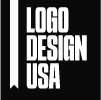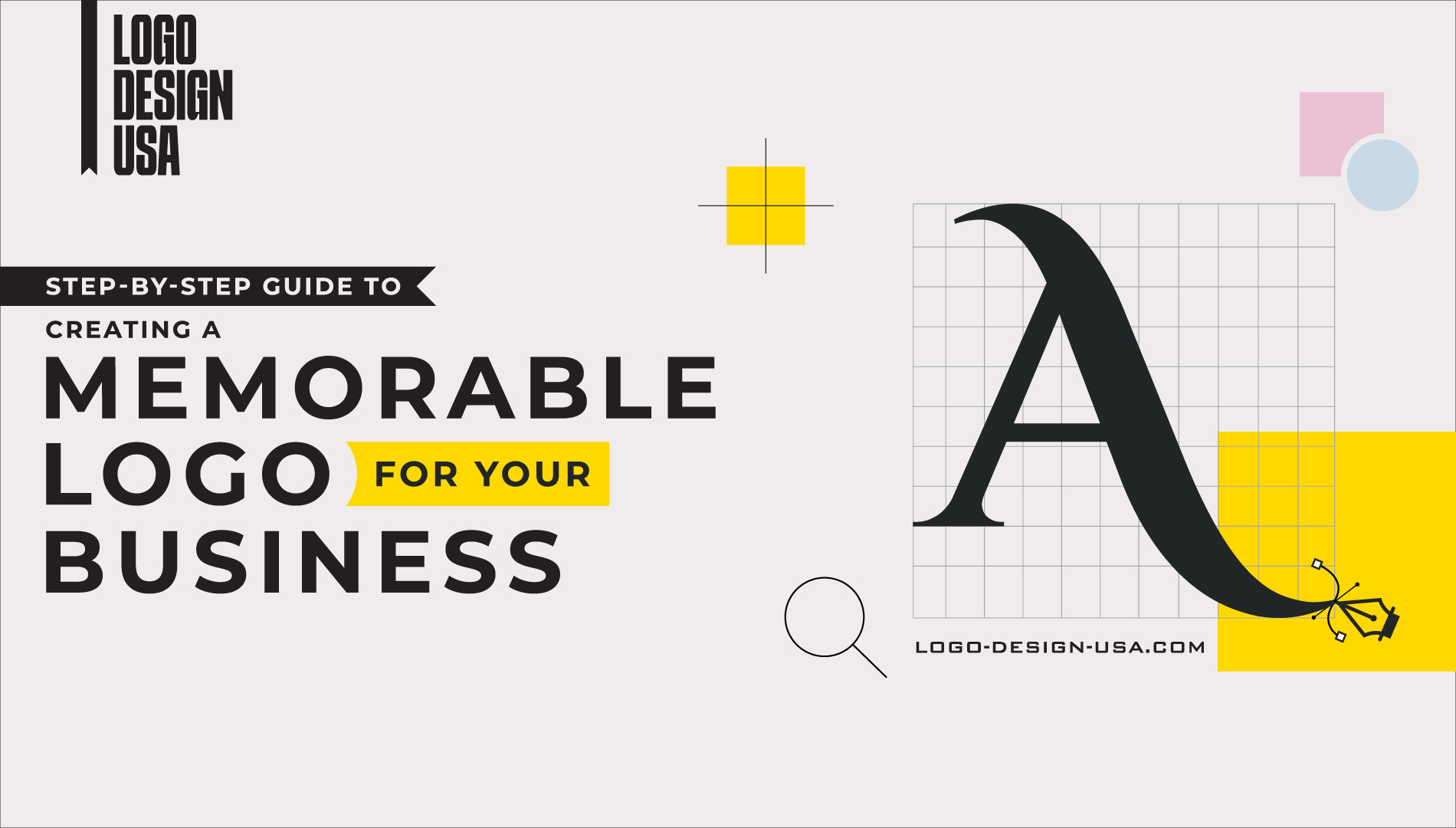Step-by-Step Guide to Creating a Memorable Logo for Your Business
Your logo is like your brand’s handshake—it needs to be strong, confident, and memorable. Whether you’re launching a startup or refreshing your brand, a great logo builds trust, grabs attention, and makes you instantly recognizable.
But How to design a logo from scratch one that doesn’t look like it was made in MS Paint? Don’t worry—we’ve got your back. This no-fluff, step-by-step guide will walk you through the entire logo design process, from brainstorming to final execution.
How to design a logo from scratch
Step 1: Define Your Brand Identity (The Foundation of Great Logo Design)
Before you even open a design tool, you need crystal-clear clarity about your brand. Your logo isn’t just a pretty graphic – it’s a visual representation of everything your business stands for. Here’s How to design a logo from scratch to dig deep into your brand identity:
1. Business Values & Mission
What problem does your business solve?
What makes you different from competitors?
What core principles guide your company?
Example: Patagonia’s logo reflects their environmental activism, while Apple’s symbolizes innovation.
2. Target Audience Analysis
Demographic details (age, gender, location, income)
Psychographics (interests, values, lifestyle)
Where do they interact with brands? (Social media? Physical stores?)
Example: A law firm’s logo would differ dramatically from a skateboard shop’s.
3. Brand Personality & Voice
Choose 3-5 adjectives that describe your brand:
Playful vs. Serious
Modern vs. Traditional
Affordable vs. Luxury
Rebellious vs. Conservative
4. Competitive Landscape
Analyze 5-10 competitor logos
Identify common colors/styles in your industry
Note what works and where you can differentiate
Pro Tip: Create a Comprehensive Mood Board
Gather visual inspiration including:
Color palettes (use Coolors or Adobe Color)
Typography samples (Google Fonts, Typewolf)
Imagery styles (photography, illustrations)
Texture references (metallic, matte, organic)
Example logos you admire (even outside your industry)
Tools to build your mood board:
Pinterest (best for visual collection)
Milanote (great for collaborative boards)
Adobe Spark (creates polished presentations)
Bonus Exercise: The Logo Test
Imagine your logo needs to communicate your brand without any words. Would someone understand:
What you do?
Who you serve?
Why you’re different?
This foundational work ensures your logo isn’t just aesthetically pleasing, but strategically effective at communicating your brand’s essence.
Step 2: Gather Strategic Design Inspiration

Where to Find Logo Inspiration That Actually Works
1 . Competitor Analysis (Do It Right)
Create a spreadsheet analyzing 10-15 competitors
Note: Color schemes, typography, symbols/styles used
Identify patterns (e.g., 80% of fintechs use blue)
Spot opportunities to differentiate (what’s missing?)
2 . Professional Design Galleries
Dribbble (Top designers’ latest work)
Behance (Complete branding projects)
LogoPond (Dedicated logo inspiration)
Awwwards (Cutting-edge design trends)
3 . Beyond the Obvious Sources
Nature (Leaf patterns, animal silhouettes)
Architecture (Clean lines, structural forms)
Vintage Signage (Retro typography styles)
Cultural Symbols (Meaningful local icons)
Pro Tip: Use Pinterest’s visual search to find similar styles to logos you like.
Step 3: Select Your Logo Style Strategically
Logo Style Breakdown with Modern Examples
| Style | Key Characteristics | Best Applications | Contemporary Examples |
|---|---|---|---|
| Minimalist | Clean lines, negative space, limited colors | Tech, consulting, modern brands | Dropbox, Airbnb |
| Vintage/Retro | Distressed textures, classic typography | Craft breweries, boutique shops | Pabst Blue Ribbon, Filson |
| Handcrafted | Organic shapes, imperfect lines | Artisan products, eco-brands | Burt’s Bees, Etsy |
| Geometric | Precise shapes, symmetry | Finance, architecture | Chase, Polygon |
| 3D/Isometric | Depth, shadow effects | Gaming, tech startups | Unity, Nvidia |
Design Insight: Most Fortune 500 companies use minimalist designs for versatility.
Step 4: Choosing Your Logo Type (With Modern Considerations)
Logo Format Options Explained
1 . Wordmarks (Text-Only)
Best for: Companies with unique names
2024 Trend: Custom lettering (e.g., TikTok’s custom font)
Example: Google’s colorful, evolving wordmark
2 . Lettermarks (Initials)
Best for: Long company names
Pro Tip: Ensure initials don’t spell anything undesirable
Example: HBO Max’s sleek typographic treatment
3 . Pictorial Marks
Best for: Global brands needing visual recognition
Warning: Requires significant marketing to establish meaning
Example: Twitter’s bird evolution
4 . Mascots
2024 Insight: Growing in esports and food brands
Example: Duolingo’s animated owl character
5 . Combination Marks
Most versatile option
Modern Approach: Design elements that work together and apart
Example: Burger King’s recent rebrand
Step 5: Advanced Color & Typography Psychology
Color Selection Guide (Beyond Basics)
| Color | Psychological Impact | Industry Best Practices | Modern Example |
|---|---|---|---|
| Deep Blue | Trust, stability | Finance, healthcare | IBM’s recent vibrant blue |
| Coral | Friendly, approachable | Lifestyle, education | Instagram’s gradient |
| Sage Green | Eco-friendly, calm | Sustainability brands | Aesop’s packaging |
| Neon | Edgy, youthful | Gaming, nightlife | Monster Energy |
2024 Trend: Monochromatic color schemes with single accent colors
Typography Masterclass
Serif Fonts
New Trend: Chunky serifs (e.g., Patagonia’s bold look)
Best Use: Print materials, luxury branding
Sans-Serif
2024 Favorite: Geometric sans (e.g., Circular STD)
Digital Advantage: Better readability on screens
Variable Fonts
Cutting Edge: Single fonts that adapt weight/width
Example: Google’s Product Sans flexibility
Font Pairing Rules:
Contrast weights (bold header + light body)
Limit to 2 typefaces max
Ensure legibility at small sizes
Critical Mistake to Avoid: Using free fonts that appear on thousands of other logos
This expanded version provides actionable insights with contemporary examples while maintaining readability. Each section now offers specific, up-to-date information that designers and business owners can immediately apply to their logo creation process.
If you want Use a Logo Maker (5 Best Tools)
If you’re not a designer, these tools can help you How to design a logo from scratch:
1. Shopify Logo Maker (Free)
✅ Best for: E-commerce businesses
✅ Features: AI-generated logos, customizable templates
✅ Why use it? Quick, professional, and integrates with Shopify stores.
2. Fiverr Logo Maker (Free & Paid)
✅ Best for: Budget-friendly custom designs
✅ Features: AI-powered logo creation + option to hire designers
✅ Why use it? Affordable and offers human touch options.
3. Canva (Free & Paid)
✅ Best for: Beginners & DIY designers
✅ Features: Drag-and-drop editor, thousands of templates
✅ Why use it? Super easy to use, great for quick designs.
4. Looka (Formerly Logojoy) (Paid)
✅ Best for: AI-generated logos with high-quality files
✅ Features: Brand kit creation, social media assets
✅ Why use it? Professional results without hiring a designer.
5. Hatchful by Shopify (Free)
✅ Best for: Startups & small businesses
✅ Features: Industry-specific templates, instant downloads
✅ Why use it? Free, fast, and great for branding consistency.
Step 7: Professional Logo Finalization & Testing Process
Comprehensive Logo Evaluation Checklist
1 . Strategic Feedback Collection
Conduct A/B testing with 3-5 design variations
Gather input from:
Target audience members (50% of feedback)
Industry professionals (30%)
Complete outsiders (20%)
Use tools like UsabilityHub for unbiased reactions
2 . Technical Stress Testing
Size scalability:
Minimum: 24px favicon version
Maximum: Billboard-sized rendering
Format testing:
Vector (AI/EPS) for print
High-res PNG for digital
SVG for web use
3 . Versatility Assessment
Monochrome version must remain recognizable
Test on:
Dark backgrounds
Photographic overlays
Various material textures
4 . Legal Verification
Trademark search (USPTO TESS database)
Domain availability check
Social media handle consistency
Pro Designer Tip: Create a “logo torture test” by placing it on mockups of:
Coffee cup sleeves
Mobile app icons
Embossed business cards
Stadium jumbotrons
Step 8: Strategic Logo Implementation Framework
Cross-Platform Deployment Guide
Digital Presence:
1 . Website Optimization
SVG format for header
32×32 favicon version
Structured data markup for SEO
2 . Social Media Mastery
Platform-specific sizing:
Instagram: 110x110px profile
Twitter: 400x400px
LinkedIn: 300x300px
Animated versions for Stories/Reels
Print Applications:
3 . Stationery System
Business card die-cut variations
Letterhead watermarks
Email signature blocks
4 . Packaging Solutions
Debossed/foil stamp options
Minimum readable size guidelines
Color-managed proofs
Environmental Branding:
Vehicle wrap specifications
Building signage sightline calculations
Trade show booth applications
Advanced Brand Style Guide Components
1. Logo Usage Rules
Clear space requirements
Minimum size thresholds
Improper usage examples
2. Digital Asset Management
Cloud-based brand portal
Version control system
Downloadable templates
3. Motion Guidelines
Logo animation principles
Loading sequence timing
Transition behaviors
4. Brand Architecture
Sub-brand relationship rules
Co-branding specifications
Campaign-specific variations
Enterprise Tip: Implement a brand management platform like Frontify or Bynder for global consistency across large organizations.
This professional-grade approach ensures your logo maintains maximum impact and recognition across all touchpoints while protecting brand equity long-term. The testing protocols help identify potential issues before they become expensive rebranding problems.
Conclusion
A great logo is simple, memorable, and timeless. Whether you design it yourself using logo makers or hire a professional, make sure it reflects your brand’s identity.
Need a custom logo? Check out Logo Design USA for professional, high-quality designs tailored to your business! 🚀




One Comment
Best Logo Design Trends in 2025: Examples & Tips – Logo Design USA
[…] ahead of logo design trends is crucial for businesses looking to make a lasting impression. As we step into 2025, logo design continues to evolve with fresh styles, innovative techniques, and a focus on […]